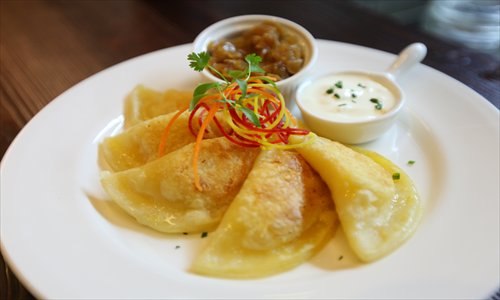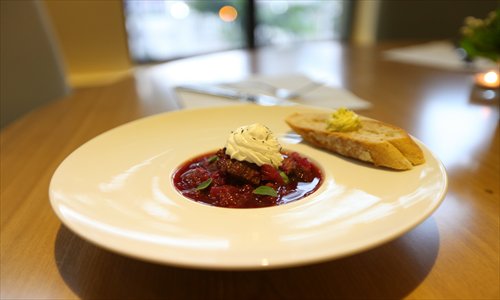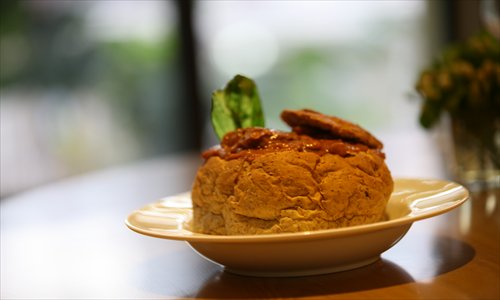Eastern promises
The borders of Eastern European countries have moved back and forth so many times, and the crossover of regional influences has been so great that it is sometimes hard to say which so-called "national" dishes originated in which country.
What is certain is that marriages between nobles and aristocracy across the whole of Europe centuries ago helped to bring the culinary flavors of Italy, France, Turkey and Germany to the tables of Eastern Europe. But while the cuisines of Poland, Czech Republic, Hungary and Romania have been blended into many other culinary traditions, each has managed to maintain their own separate identity.

Rich and hearty
Eastern European food is characterized by home-style cooking and traditional recipes passed down from generation to generation. It is rich and hearty, in large part to the region's long, cold winters.
Hungary, for example, is famous for goulash which is its national dish and a symbol of the country. Goulash is a soup, or stew, of meat, noodles and vegetables and potatoes, seasoned with paprika and other spices. Although it originated in Hungary, it is also very popular in Poland, Germany, and Czech Republic, and it can be served in a variety of ways.
The most well-known Russian dish is probably borsch, although it is actually of Ukrainian origin. Today it is a staple soup in many Eastern and Central European countries. Made with beetroot as the main ingredient, borsch is usually eaten as an appetizer with rye bread, and can be served hot or cold. In Poland, borsch is always the first course at Christmas Eve dinner, served with ravioli-type dumplings called uszka, which literally means "little ears" and which have a mushroom and sauerkraut filling.
Other Russian favorites include pirozki, small buns stuffed with fillings such as meat, mushrooms and white cheese, and blini, thin pancakes often served during religious festivals that can be topped with butter, sour cream, fruit or caviar.
Pierogi, the Polish national dish, is similar to Chinese jiaozi. They are small dumplings, traditionally stuffed with mashed potatoes, sauerkraut, meat, cheese, or fruits. They are first boiled and then baked or fried, and served with fried onions and sour cream. Traditionally, pierogi was considered to be "peasant" food but eventually it found popularity throughout all of the country's social classes. Although pierogi is an important part of Polish culture and cuisine today, it has also become very popular in other Eastern European countries.

Czech this out
Czech cuisine includes a lot of meat dishes, with pork being the most common. Knedlíky, a steamed and sliced bread-like side dish, is served with almost every dish. Smažený sýr, a contemporary Czech dish, is a fried, thick slice of cheese coated in bread crumbs and served with French fries and tartar sauce.
An important dish in Slovakia is bryndzové halušky, which is potato dumplings with sheep cheese and bacon, and is sometimes sprinkled with fried, small pieces of bacon.
No Eastern European meal would be complete without a dessert and a cup of coffee or tea. Desserts range from small cookies to big tortes (rich cakes). Sernik, a Polish version of American cheesecake, Croatian povitica, a sweet yeast bread roll with a moist walnut filling, Slovak makovník, a poppy-seed roll, and Hungarian indianer, cream puffs similar to French profiteroles, are just some of the staple desserts that often appear on Eastern European menus.
Eastern European traditional food constitutes one of the highlights of traveling to the region, and its cuisine is as welcoming as its people. But you don't have to travel that far to enjoy Russian borsch, Hungarian goulash or Polish pierogi. Shanghai has plenty of options where you can enjoy these culinary delights. Bon appetit!

Dishing it up
Bloc is a contemporary Eastern European restaurant, the latest addition to Shanghai's culinary scene. It is the debut venture of Mike Solovey, an American chef and graduate of the worldwide hospitality institute Cordon Bleu graduate, who has been inspired by his Ukrainian heritage. Staple dishes on the menu include pierogi, served with sour cream and caramelized onions, borsch, inspired by Slovey's own family recipe, Halupki, cabbage rolls stuffed with beef and mushrooms, and goulash, which is served inside a large bread roll. The drinks menu includes a wide selection of imported Czech beers and Russian vodkas.
Bloc
Add: 2/F, 139-19 Changle Road 长乐路139-19号2楼
Tel: 6404-6685
Opening hours: 5:30 pm till late
Located just 15 minutes away from the Bund, the Flying Elephant has a truly authentic feeling with a live Russian band performing every night, taking you right back to the Soviet era. The restaurant serves popular Russian dishes, like borsch, blini and beef stroganoff, as well as some lesser-known delights, such as potato fritters (similar to French fries) and eggplant cheese. Their drinks menu is impressive with an extensive range of Russian vodkas.
Flying Elephant
Add: 3/F The Bund Hotel, 525 Guangdong Road
Tel: 6351-0797
Opening hours: 11 am to 3 am
Known as Krasnaya Ploshad in Russian, Red Square serves a variety of Russian and Ukrainian dishes, including borsch, Russian salad, golubtsy (meat and rice wrapped in cabbage) and red caviar blini. The interior décor of the restaurant is fashioned after that of a typical Russian palace. In the evenings there are regular live performances.
Red Square
Add: Rm 308, 1/F, 1933 Shanghai, 10 Shajing Road 沙泾路10号1933老场坊1楼308室
Tel: 5512-7007
Opening hours: 11 am to 11 pm
Named after the renowned Russian wooden dolls of ever-decreasing size placed one inside the other, Matreshka offers authentic Eastern European food. A highly recommended dish is a plate of Russian pancakes with smoked salmon. Other dishes include herring salad with grated layers of egg, potato, herring and beetroot, meat-stuffed peppers and Siberian pork and beef dumplings. Modern dance music, typical of Russian nightclubs, is played in the later hours of the evening.
Matreshka
Add: 165 Shimen'er Road 石门二路165号
Tel: 6271-0385
Opening hours: 11 am to 11 pm